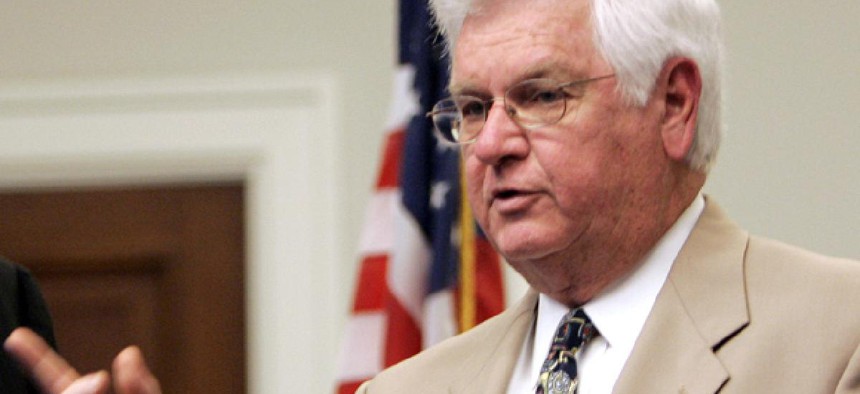Does New House Plan to Keep Agencies Funded Have a Chance?
Bill would exceed Boehner's spending promise, unless sequestration takes hold.
House Appropriations Committee Chairman Harold Rogers, R-Ky., says he is preparing to introduce a bill to keep government agencies funded through the end of the fiscal year that will be written with a spending level beyond what Speaker John Boehner has promised rank-and-file conservatives.
Rogers’ proposal will reflect the $1.043 trillion discretionary spending cap for the fiscal year ending Sept. 30 that was agreed upon with the Senate under the 2011 Budget Control Act; the total is above the $974 billion level that is being promised by the speaker. But Rogers says that is largely a “technicality.”
“We’ll also say in the bill that it is subject to sequestration on the way,” Rogers explained, referring to the $85 billion in across-the-board cuts to defense and domestic discretionary programs set to kick in March 1.
Given the assumption those sequestration cuts will occur, Rogers told reporters gathered outside of the House chamber, his bill will not actually add to the spending cap for the year that Boehner has promised.
There was no immediate response from Boehner’s office.
“It’s basically the same--six of one, half-dozen of the other,” argued Rogers.
But he also noted the passage of his bill with the higher $1.043 trillion figure might make it “much more acceptable, I think, over there (Senate).”
Rogers said he plans to introduce his measure, known as a “continuing resolution,'' by the end of February so that it can be acted upon before the current stop-gap measure expires on March 27. The funding it allows would keep government operating through the Sept. 30 end of the 2013 fiscal year.
A continuing resolution is needed because Congress has not passed the 13 separate annual appropriations bills that were officially due on Oct. 1. But Rogers said his bill will include texts of two new fully detailed spending packages — for the Defense Department and for funding for military construction, Veterans Affairs, and related agencies.
He said that language has already been negotiated with the Senate Appropriations Committee and will allow military-related agencies more “flexibility” to move money around and do new projects. “The plan is to take the straightjacket that the CR puts them under where they can’t do multiyear contracts, new starts … it will wind up saving a lot of money,” said Rogers. “More importantly, it will give them the opportunity to more effectively handle national defense operations, maintenance, and the like.”
Rogers did not say so, but adding language also might be designed to bring on board conservatives who might be wary of his bill but are concerned about the budget complications that have been facing the Defense and the Veterans Affairs departments.
When pressed, Rogers said it would be up to House Republican vote counters to conclude whether rank-and-file conservatives will go along with a continuing resolution that, at least on its face, has a spending cap higher than they’ve been promised.
But his comments appeared to give a sense of inevitability to the notion that the sequester cuts will be carried out — so that is why he is comfortable with the $1.043 trillion spending level.
Rogers said, “I don’t know of any conversations going on to avoid sequester.”
Many Republicans and Democrats want to replace those mandatory, across-the-board cuts or at least mitigate them, but they can’t agree on how to do it. Boehner has promised the sequestration cuts, which are split evenly between military and discretionary domestic spending, will stay in effect unless they are replaced by other spending reductions of equal size from other parts of the budget.
But many Democrats oppose moves to replace the military cuts solely through making more cuts in domestic programs. They want some of the cuts softened through new taxes or revenues, which Republicans oppose.
Earlier on Wednesday, House Appropriations ranking member Nita Lowey, D-N.Y., released a report described as detailing the impact of the $85 billion in sequester budget cuts set to hit on March 1 if Congress does not act to replace or soften them.
The report includes such details as cuts to programs and services as well as employee furloughs, impacting agencies involved with homeland security and law enforcement, education, health and research, disaster relief, and military readiness.
NEXT STORY: Postal Reform Nears End Zone, Lawmakers Say




